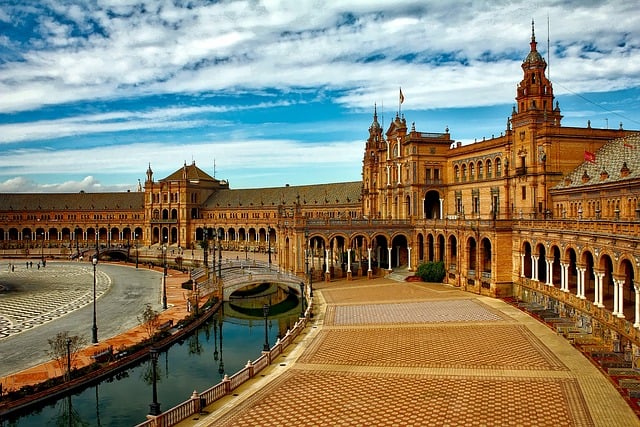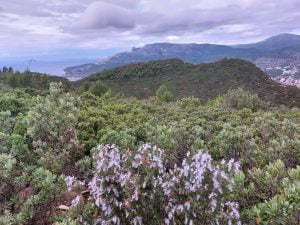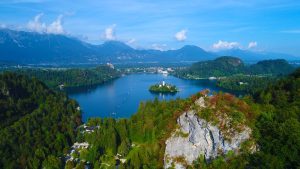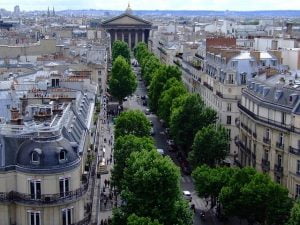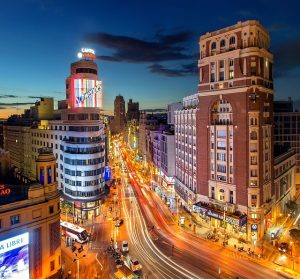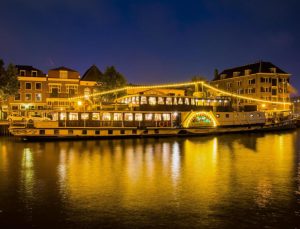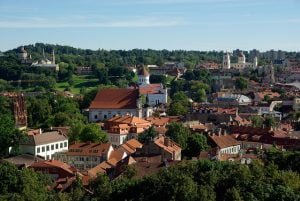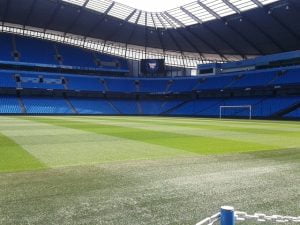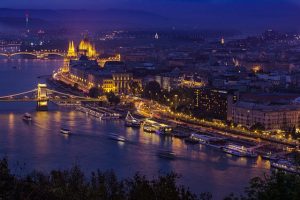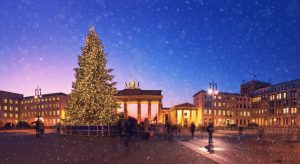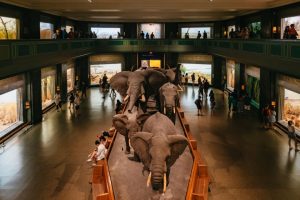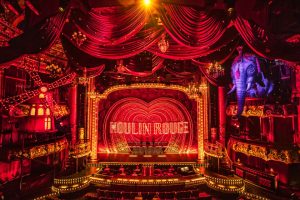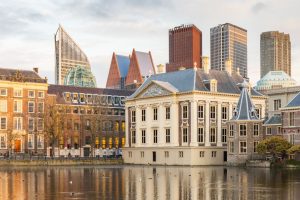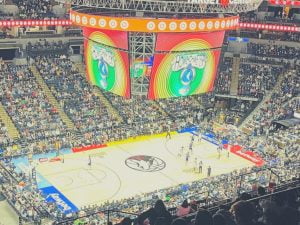Discover the city of Seville, a city that connects old and new in a beautiful and harmonious way. We will delve into the history, culture, architecture and unparalleled charm that Seville offers. From its iconic landmarks to its hidden gems, Seville is a city that deserves to be on everyone's bucket list.
The history of Seville: a look back at its past?
Seville, the capital city of Andalusia in southern Spain, is steeped in a rich history dating back thousands of years. As one of the oldest cities in Europe, it has witnessed the rise and fall of different cultures, leaving behind a treasure trove of historical landmarks and cultural heritage. From its humble beginnings as a Roman settlement known as Hispelis to its prominence as a flourishing Islamic city during Moorish rule, Seville has been shaped by a succession of civilizations.
Throughout its history, Seville has been a melting pot of cultures, each of which has left its mark on the city's architecture, art and traditions. The Roman influence is evident in the ruins of Italica, an ancient Roman city just outside of Seville, which showcases amphitheatres and impressive mosaics. During the Islamic period, the city experienced a golden age, with the construction of iconic landmarks such as the Giralda, the bell tower of Seville Cathedral that became a minaret, and the Alcázar, a magnificent palace with stunning Moorish architecture.
Seville's history also includes its role as a center of exploration during the Age of Discovery. As a gateway to the New World, it became a center of trade and commerce, attracting traders and explorers from around the world. The city's port played a vital role in the expeditions of Christopher Columbus and Ferdinand Magellan, cementing Seville's place in history as a key player in global maritime trade.
Today you can see remnants of Seville's past in every corner of the city. Walking through its narrow streets, visitors can admire the intricate details of medieval buildings, the Andalusian-style patios decorated with colorful tiles, and the magnificent squares that have witnessed historical events. The city's vibrant history is also celebrated in its many museums, such as the Museum of Fine Arts and the Archaeological Museum, which house priceless artifacts and works of art that showcase the city's past.
Seville's iconic landmarks: what makes them stand out?
Seville Known for its iconic landmarks that attract visitors with their splendor and beauty. These architectural wonders showcase the city's rich history and cultural heritage, making Seville a must-see destination for travelers. One of the prominent landmarks is the Seville Cathedral, the largest Gothic cathedral in the world. Its sheer size and intricate details, such as the stunning stained glass windows and the burial site of Christopher Columbus, make it a sight to behold. The Giralda, the cathedral's bell tower, is an architectural masterpiece that offers panoramic views of the city.
The Alcazar of Seville is another notable landmark, combining Moorish and Christian architectural styles. Its stunning courtyards, lush gardens and intricate tilework transport visitors to a bygone era. The royal palace within the Alcazar boasts magnificent rooms decorated with intricate carvings and ornate decorations, showcasing the splendor of the Spanish monarchy.
Plaza de España is a must-see landmark that showcases Seville's unique blend of Renaissance and Moorish architectural styles. This spacious square is decorated with colorful azulejo tiles, depicting scenes from Spanish history and folklore. Visitors can leisurely stroll along the canal or relax on the decorated benches while admiring the beauty of the surrounding buildings.
The Metropol Parasol, also known as Las Stas (The Mushrooms), is a modern landmark that has become an iconic symbol of Seville. This contemporary structure is the largest wooden structure in the world and offers amazing views of the city from its roof terrace. Its unique design, resembling a giant mushroom, has gained international acclaim and has become a popular spot among locals and tourists alike.
The cuisine of Seville: what makes it special?
Seville's cuisine is a delightful reflection of its vibrant culture and rich history. The city's unique culinary offering is the result of a melting pot of influences from the Moors, the Romans and the New World. One of the distinct characteristics of Seville's cuisine is its focus on fresh and original local ingredients. The city's proximity to the Guadalquivir River and the fertile lands ensures an abundant supply of fresh produce, which forms the basis of many traditional dishes. From juicy tomatoes to flavorful olives and aromatic herbs, the ingredients used in Seville's cuisine are bursting with natural flavors.
One of Seville's most iconic dishes is gazpacho, a cool and refreshing tomato soup perfect for hot summer days. Made with ripe tomatoes, cucumbers, peppers, garlic, olive oil and vinegar, this dish is a true celebration of the region's fresh produce. Another popular dish is salmorjo, a thicker, creamier version of gazpacho, often served with garnishes such as ham or hard-boiled eggs.
Seville is also famous for its tapas culture, where small plates of tasty bites are enjoyed with a glass of local wine or a cold beer. From crispy fried fish to juicy grilled meats, the tapas in Seville offer a wide variety of flavors and textures. A must-try tapa is the montadito, a small sandwich filled with various ingredients such as jamon iberico, cheese or pickled ham.
Seville's sweet treats are equally tempting and showcase the city's love of indulgence. The city is known for its traditional desserts such as Torrijas, a type of French toast soaked in milk and flavored with cinnamon and honey. Another popular sweet treat is pastinho, a honey-soaked pastry made from flour, sesame and anise seeds.
"The flamenco culture of Seville: a dance of passion and emotion"
Seville's flamenco culture is a mesmerizing display of passion, emotion and artistic expression. Flamenco is not just a dance; It is a way of life deeply rooted in the history and soul of the Andalusian region. The city of Seville is considered the birthplace of flamenco, and its streets and venues come alive with the mesmerizing rhythms and exciting melodies of this art form.
Flamenco is a combination of music, song and dance, where performers pour their heart and soul into every movement. The powerful footwork, complex hand movements and soulful expressions of the dancers captivate the audience and transport them to a world of intense emotions. The music, often accompanied by guitar, clapping and singing, sets the stage for the powerful performance.
In Seville, flamenco is not just a performance; It is a way of life that permeates the culture of the city. The flamenco tradition is passed down through the generations, as families and communities preserve and respect the art form. Seville is home to many flamenco tables, intimate places where locals and visitors can witness raw and authentic flamenco performances.
Experiencing flamenco in Seville is an immersive and unforgettable experience. Visitors can attend flamenco shows in historic venues such as Casa de la Memoria or Museo del Baile Flamenco, where they can witness the expertise and passion of flamenco artists. Alternatively, they can wander the narrow streets of the Triana neighborhood, known as the birthplace of many flamenco legends, and encounter impromptu performances in local bars and taverns.
Modern Seville: how has the city developed over the years?
Seville, the historic city known for its rich cultural heritage, has also undergone significant changes in recent years. Beneath its timeless charm and historical landmarks, Seville has embraced modernity while preserving its traditional roots. Here, we explore how the city has evolved over the years.
- 1. Urban development:
Seville has witnessed an extraordinary urban development in recent years, with the construction of modern infrastructure and architectural wonders. The city expanded its transportation network, including building new bridges and expanding its metro system. The regeneration of areas such as the riverside and the transformation of old industrial areas into contemporary spaces have added a modern touch to the urban landscape. - 2. Technological progress:
Seville has embraced technology to improve various aspects of city life. Implementation of smart city initiatives has improved efficiency in areas such as transportation, waste management and public services. The city's commitment to sustainability is evident through the use of renewable energy sources and the promotion of environmentally friendly methods. - 3. Cultural Vitality:
While Seville has embraced modernity, it has also managed to preserve its cultural vibrancy. The city continues to celebrate its traditional festivals and cultural events, such as the Feria de Abril and Semana Santa, which attract visitors from around the world. Seville's museums and art galleries have also evolved, showcasing contemporary works alongside the city's historic masterpieces.Despite its modern progress, Seville remains deeply rooted in its history and traditions. The city's ancient architecture, narrow cobbled streets and charming squares continue to transport visitors back in time. Seville strikes a delicate balance between old and new, creating a unique blend of past-meets-present that captivates all visitors.
"Seville Festivals: A Celebration of Life and Tradition"
Seville is known for its vibrant and lively festivals, which are a true reflection of the city's rich cultural heritage. Throughout the year, Seville comes alive with countless celebrations showcasing the city's love of music, dance and tradition. These festivals are an integral part of Seville life and attract locals and tourists alike to experience the joyful atmosphere.
One of the most iconic festivals in Seville is the Feria de Abril, held in April. This week-long celebration transforms the city into a dazzling spectacle of color, with thousands of people dressed in traditional flamenco attire. The fairgrounds are full of cassettes, elegantly designed tents, where locals and visitors gather to dance, sing and indulge in delicious food and drink. The Feria de Abril is a true celebration of Seville's culture, with flamenco music and dance performances taking center stage.
Another highlight of Seville's festival calendar is Semana Santa, or Holy Week. This festive religious procession takes place the week before Easter and is a deep-rooted tradition in Seville. Elaborate floats, carried by members of religious fraternities, make their way through the streets of the city, accompanied by fascinating beautiful music. The atmosphere during Semana Santa is both awe-inspiring and awe-inspiring as locals and visitors alike gather to witness this centuries-old tradition.
In addition to these major festivals, Seville hosts many other cultural and religious celebrations throughout the year. From the Corpus Christi parades to the Flamenco Biennale, each festival offers a unique glimpse into the vibrant tapestry of Seville life. These celebrations not only showcase the city's rich traditions but also provide a sense of unity and community among its residents.
Seville's hidden gems: what lies beyond the tourist trail?
When visiting Seville, it's easy to get caught up in the popular tourist attractions. However, beyond the well-known landmarks and bustling downtown, lies a treasure trove of hidden gems waiting to be discovered. These lesser known places offer a unique and authentic experience of Seville, away from the crowds and tourist traps. Here are some hidden gems worth adding to your itinerary:
- 1. Barrio Santa Cruz:
Barrio Santa Cruz, hidden in the heart of the city, is a charming neighborhood that exudes old-world charm. Its narrow and winding streets are lined with picturesque buildings decorated with colorful tiles and cast iron balconies. This neighborhood is perfect for leisurely strolls, where you can come across hidden squares, quaint cafes and local boutiques. - 2. Hospital de los Venerables:
This hidden gem is a true architectural wonder. The Hospital de los Venerables is a 17th century building that used to be a residence for elderly priests. Today, it houses a museum and art center, displaying a collection of Baroque paintings and sculptures. The highlight of the building is the amazing Andalusian style courtyard, decorated with intricate tile work and beautiful gardens. - 3. Metropol Parasol:
One of Seville's most modern and innovative architectural marvels, the Metropol Sun is a must-see for those looking for a unique experience. This huge wooden structure, also known as the "mushroom", offers a panoramic view of the city of Maggo. It also contains an archaeological museum and hosts various cultural events throughout the year.
Seville's art scene: where tradition meets modernity?
Seville's art scene is a captivating blend of tradition and modernity, reflecting the city's rich cultural heritage and progressive mindset. The city has long been a focus of artistic expression, with its influence stretching back centuries. From its stunning architecture to its world-famous museums, Seville offers a wide variety of artistic experiences that seamlessly blend the old with the new.
One of the highlights of Seville's art scene is its traditional flamenco shows, which showcase the city's deep-rooted passion and emotion. Flamenco, a unique form of music and dance, is an integral part of Seville culture. Visitors can witness mesmerizing performances in intimate venues, where talented dancers, guitarists and singers come together to create an electrifying atmosphere.
Seville is also home to a thriving contemporary art scene, with many galleries and art spaces showcasing the work of local and international artists. Alameda de Hércules, a lively neighborhood known for its trendy bars and cafes, is also a hot spot for contemporary art. Here you can explore galleries featuring innovative installations, experimental artworks and thought-provoking exhibitions.
In addition to its traditional and contemporary art forms, Seville's architecture perfectly embodies the fusion of tradition and modernity. The city is decorated with amazing examples of Mudéjar architecture, a unique combination of Islamic and Christian styles. The iconic Giralda Tower, part of Seville Cathedral, is an excellent example of this architectural style. The intricate details and its towering presence are a testament to the city's rich history.
Furthermore, Seville's commitment to promoting art and creativity can be seen in the annual Biennale of Contemporary Art, a prestigious event that attracts artists and art lovers from around the world. This biennale showcases a wide range of artistic disciplines, including painting, sculpture, photography and performance art, providing a platform for established and emerging artists to showcase their talents.
The architecture of Seville: what stories do they tell?
Seville's architecture is a testament to its rich history and cultural significance. The city is decorated with magnificent buildings that tell the stories of its past, reflecting the various influences that shaped its architectural landscape. From Moorish palaces to Gothic cathedrals, Seville's architecture is a visual narrative that showcases the city's diverse heritage.
- 1. Moorish influence:
Traces of al-Andalus
The Moorish influence is evident in the architecture of Seville, with remnants from the Al-Andalus period still visible today. The Alcázar of Seville, a stunning palace complex, is an excellent example of this influence. Its intricate geometric patterns, horseshoe arches and stunning tile work are reminiscent of the Moorish style. Walking through its beautifully landscaped gardens and ornate halls, visitors can immerse themselves in the stories of Al-Andalus. - 2. Gothic splendor:
Seville Cathedral
Seville Cathedral, one of the largest Gothic cathedrals in the world, stands as a magnificent symbol of Seville's Christian heritage. Its impressive structure, with the towering Giralda bell tower, is awe-inspiring. The construction of the cathedral began in the 15th century, on the site of a former mosque, and its completion took over a century. The intricate details of its facade and the grandeur of its interior tell the story of the city's religious devotion and architectural prowess. - 3. Renaissance Revival:
Plaza de España
Plaza de España, located within the beautiful Maria Luisa Park, is a stunning example of Renaissance Revival architecture. Built for the Ibero-American Exposition of 1929, the square is a magnificent showcase of Seville's cultural and artistic heritage. The semi-circular design, decorative tiles and ornate bridges create a picturesque setting that invites visitors to explore its magical surroundings. The expansion tells the story of Seville's desire to embrace modernity while paying respect to its historical roots.
Why should Seville be your next travel destination?
Seville should be your next travel destination as it offers a unique blend of history, culture and vibrant energy that is hard to find elsewhere.
First and foremost, Seville's rich history is felt as you stroll its ancient streets and visit its iconic landmarks. The Moorish and Christian influences of the city are beautifully intertwined, creating a captivating architectural landscape that will leave you in awe. From exploring the grandeur of the Alcázar to marveling at the intricate details of Seville Cathedral, history buffs will be in heaven.
But Seville is not just a city frozen in time. It also pulsates with a vibrant and energetic atmosphere that is contagious. The locals' passion for flamenco is felt at every corner, as the city is the birthplace of this passionate and exciting dance form. Attending a flamenco performance is a must-do, where you can witness the raw talent and intense emotions that make up this captivating art form.
Additionally, Seville's culinary scene is a true foodie's delight. The city is known for its tapas culture, where you can taste a wide variety of small plates bursting with flavor. From the salty Jamon Iberico to the refreshing gazpacho, Seville's cuisine is a true reflection of its Andalusian roots.
Furthermore, Seville's festivals are a sight to behold. The city comes alive during events such as Semana Santa (Holy Week) and the Feria de Abril (April Fair), where the streets are decked out in vibrant decorations and locals and visitors alike gather to celebrate with music, dance and traditional food and drink.
Seville, with its rich history, diverse culture and stunning architecture, is a city that offers something for everyone. Whether you are a history buff, a foodie or just someone looking for a unique travel experience, Seville will not disappoint. Its combination of traditional and modern elements makes it a city worth visiting and revisiting.

